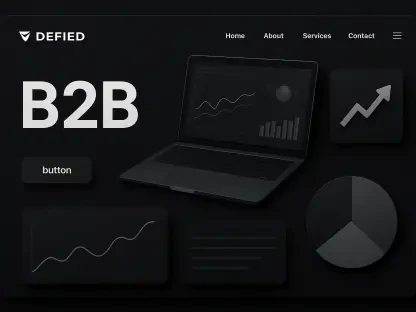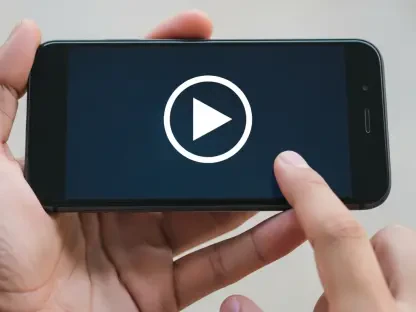The success of any social search marketing campaign hinges on the quality of the content produced. Content creators play a crucial role in this process, and a well-crafted brief ensures they can deliver content that aligns with your goals. Getting the best out of a content creator partnership for social search starts with a solid brief. Without clear, actionable guidelines, even the most talented creators can miss the mark, leading to off-tone content that lacks SEO impact and falls short of your strategy. This article covers how a well-crafted brief can help bridge the gap between your marketing vision and the high-performing content you need.
1. Define the Main Goal
Establishing the primary aim of the content within your summary is essential for guiding the content creation process. When working with content creators, it’s important to help them understand the larger strategy. Whether the goal is to drive traffic, boost engagement, educate the audience, or improve conversions, make sure the creator clearly understands the purpose behind the piece.
This initial step sets the stage for everything that follows. By defining the main objective, you provide a clear direction that informs all other elements of the brief. This will help them align their creative approach with the desired outcome. For instance, if the content’s goal is to drive traffic, the creator needs to focus on crafting compelling headlines and engaging introductions that capture attention immediately.
2. Provide Focus Keywords, but Limit Them
Including your main keywords and a few related ones is vital for guiding creators on which terms to emphasize naturally in the content. Overloading a brief with too many keywords can be counterproductive and may result in forced and unnatural content. Instead, select a few core keywords that align with the main goal of the content and are relevant to the target audience’s search behavior.
By providing focus keywords, you ensure that the content will be optimized for search engines, increasing its chances of being discovered by the right audience. However, it’s equally important to communicate that these keywords should be incorporated organically. Remind creators that keyword use should feel natural and fit seamlessly within the conversation. Forced keywords can lower content quality and hurt engagement, so encourage them to use phrases that fit naturally within the context.
3. Suggest an Engaging Opening Based on Search Intent
The opening of any content piece is critical for capturing the audience’s attention and satisfying their search intent. Give creators ideas for a captivating start that aligns with search intent. A hook, such as “If you earn over $100k, you might be hit by the 60% tax trap,” directly addresses the reader’s problem and prompts them to continue reading or watching.
This approach not only meets the needs of the algorithm for which the content is being created but also encourages audiences to engage with the content. The opening should provide a solution or answer to the question that led the user to the content, ensuring that their intent is immediately acknowledged and addressed.
4. Outline Key Points, but Allow for Creativity
While it’s important to guide creators, outlining the essential topics rather than providing a full script gives them room to infuse their own voice and style into the content. For example, key points might include explaining what the “60% tax trap” is, when it applies, and legal ways to avoid it.
This structure ensures that the content remains informative and aligned with the primary goal without stifling the creator’s creativity. This gives creators structure while allowing them the freedom to bring their own voice and style to the content. The result is a piece that is both engaging and relevant, maximizing its impact.
5. Clearly Define the Target Audience
Describing the intended audience in detail, including demographics, preferences, and any specific concerns related to the topic, is critical for crafting content that resonates. The more the creator understands the audience, the better they can tailor the content’s tone and approach to match their needs and expectations.
This step helps in aligning the creator’s style with the characteristics of the target audience, ensuring the content is both engaging and relevant. A well-defined audience profile enables the creator to produce content that speaks directly to the intended viewers or readers, increasing the chances of achieving the set goals.
6. Encourage Visual Elements that Support SEO
Incorporating visual elements beyond product and service shots, such as screenshots, infographics, or on-screen calculators, can significantly enhance content quality. Visuals not only make the content more engaging but also support SEO by improving user dwell time and reducing bounce rates.
Search engines pay attention to engagement metrics, and well-designed visuals can help keep viewers interested. Therefore, let creators know the importance of visual elements and encourage them to use them creatively and effectively. These elements should enhance the content, making it more digestible and appealing, while also contributing to its search visibility.
7. Specify a Platform-Appropriate Tone of Voice
Allowing creators to use a tone that matches the platform culture is essential for ensuring the content resonates with the target audience. Each social media platform has its unique style and user expectations. Be clear about how far the tone of voice can be pushed. For instance, the tone on TikTok might be more casual compared to LinkedIn.
Giving creators this flexibility while still maintaining some brand-consistent guidelines ensures that the content feels authentic and appropriate for each platform. When briefing, be clear about how far the tone of voice can be pushed. This will help creators produce content that resonates with audiences across different channels while aligning with your brand expectations.
8. Set Clear Guidelines on Content Type Expectations
Whether it’s short-form video content for TikTok or long-form for YouTube, being explicit about content type expectations helps creators tailor their work efficiently. Recommend a length that suits the platform or specify if images are needed for platforms like Instagram and Pinterest.
This clarity helps creators better manage their time and resources, producing content that is optimized for its intended platform. By setting clear expectations, you ensure that the content not only meets quality standards but also adheres to platform specifications, maximizing its effectiveness and engagement potential.
9. Emphasize Natural Keyword Use
Reminding creators that keyword use should feel natural and fit within the conversation is crucial for maintaining content quality. Keywords should be integrated seamlessly into the content to enhance readability and engagement. Forced insertion of keywords can disrupt the flow and make the content less appealing to both users and search engines.
Encourage creators to use phrases that naturally fit within the context of the content. This approach ensures that the content remains authentic and valuable, which is essential for both SEO and audience engagement.
10. Encourage Feedback and Open Communication
Encouraging open communication and feedback throughout the content creation process is essential for producing high-quality content. By fostering a collaborative environment, you can address any issues or misunderstandings early, ensuring that the final product meets your standards and objectives. This ongoing dialogue helps in fine-tuning the content to better align with your vision and improves the overall efficiency of the partnership.









